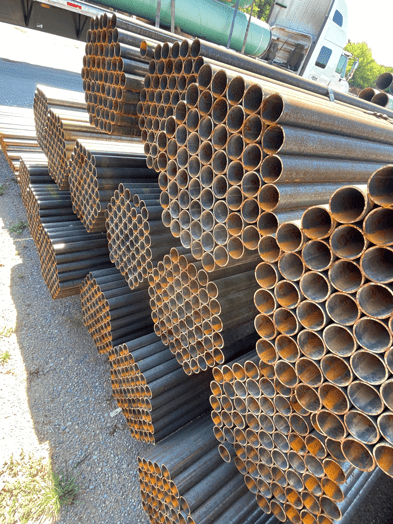Irrigation Pipe Installation: A Farmer’s Fascination

As the saying goes, “You reap what you sow.” For farmers, this means that the success of their crops depends heavily on the quality and quantity of water they receive. Installing an agricultural irrigation system is crucial in ensuring a consistent water supply for crops. However, this task can seem daunting, especially for those new to the process. Fear not, as we have compiled a step-by-step guide to help you install an effective irrigation system. So, grab your pipes for irrigation and let’s dive in!
Say goodbye to grass – Hello to H2O!
The first step in installing an irrigation system is to get rid of the sod. That involves removing the grass and other vegetation from the area where you need to install the irrigation system. It can be done manually or with the help of a sod cutter.
The Power Tools You Need to Get Water to Your Seedlings
Once you remove the sod, the next step is to obtain the right equipment for the job. That includes PVC pipes for irrigation, sprinklers, valves, and other necessary tools. High-quality equipment ensures the irrigation system functions properly and lasts long.
Ditch the Ditch Witch: Discover the Secret Weapon of Irrigation Installations
A vibratory plow is a machine used to dig trenches for pipes. It uses a vibrating blade to create a narrow trench in the ground. That is an efficient and cost-effective way to install pipes for irrigation.
Don’t be a Drip; Cut Your Pipes with a Zip!
When installing pipes for irrigation, it’s crucial to cut them correctly. That involves using a pipe cutter or saw to ensure the pipes are the right length and fit together correctly. Incorrectly cutting the pipes can result in leaks or other problems.
Keep it clean and Green – The Pipes’ Path to a Happy Life!
It’s essential to clean the pipes before installing them to ensure they are free from dirt and debris. You can do this with a pipe cleaning solution or by running water through the pipes to flush out any impurities. Clean pipes mean a longer life for your irrigation system.
The Backbone of Your System: How to Install Main Lines for Your Pipes for Irrigation
In addition to the pipes that connect to the sprinklers, the main lines bring water from the source to the irrigation system. Choosing the right size and material for the main lines is essential to ensure they can handle the water pressure and flow rate.
Give Your Crops Some Elbow Room: How to Plan Irrigation System Spacing
When installing an irrigation system, ensuring enough room for the pipes and other equipment is vital. That means considering any obstacles that may be in the way, such as trees, rocks, or other structures.
Wired for success – The Shockingly Important Wire Protection!
Finally, protecting the wires connecting the irrigation system to the power source is crucial. You can do this with wire insulation or by burying the wires in conduit to prevent damage from animals or other hazards.
Experience the Difference with Top-Quality Irrigation Pipes
If you’re looking for high-quality pipes for irrigation, look at Bison Pipe. Our pipes are made from durable materials and can withstand the harsh conditions of agricultural use. Contact us today to learn more about our irrigation products and services. Your crops will thank you for it!

